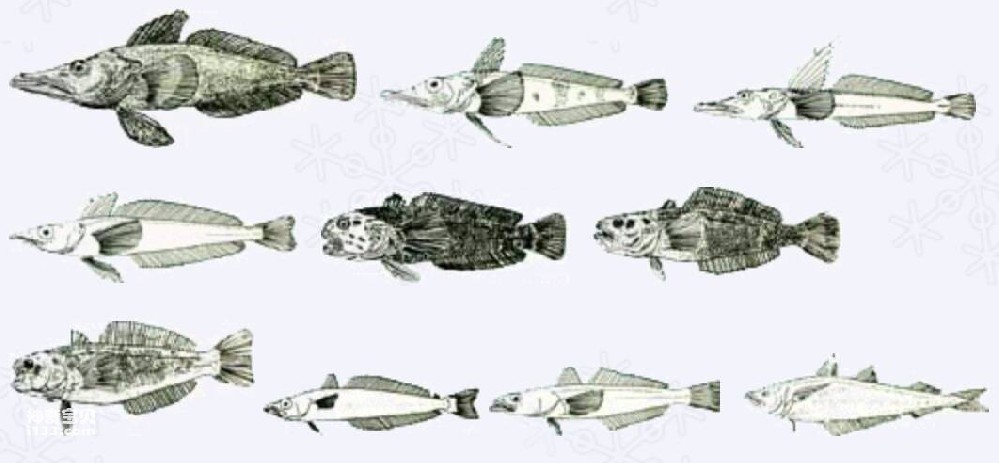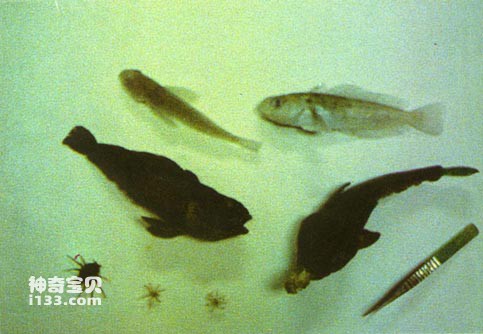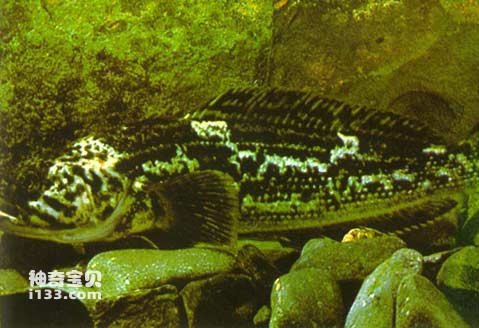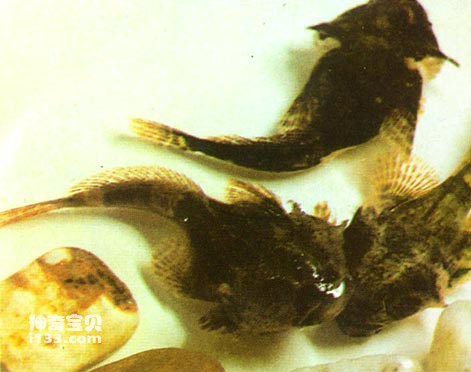There are more than 100 species of fish in the Southern Ocean, while there are more than 2,000 species of fish in other oceans around the world. In comparison, fish in the Southern Ocean are scarce, especially near the surface. In the past, people did not pay enough attention to Antarctic fishes, did not study them deeply, and knew little about them. As people's understanding of the Southern Ocean deepens, the fish resources of the Southern Ocean have attracted increasing attention. The discovery of the antifreeze protein of Antarctic cod has aroused widespread interest, thus promoting research on the functions of Antarctic fish.

Antarctic fish map
Among the fish in the Southern Ocean, the dominant species is the Antarctic fish species, accounting for 75% of the offshore fish. There are nearly 20 species of five major groups with potential economic value: Antarctic yellowtail, ray, cod, beetle and ice fish.
The common living habit of Antarctic fish is that they like to inhabit deep water layers, and there do not seem to be dense groups of surface fish. This is in sharp contrast to other oceans.

Antarctic fish
Antarctic fish are relatively small. Most species are less than 25 centimeters in length, and few exceed 50 centimeters. Only the toothfish of the family Hake can reach 1.8 meters in length and weigh 70 kilograms. Most fish grow slowly, generally increasing by 2 to 3 centimeters in body length per year. Only the large tooth-finned fish can grow by about 7 centimeters per year, and can reach 50 centimeters in 7 years. The spawning season of Antarctic fish is in late autumn and early winter in the southern hemisphere. The eggs are large, generally 2 to 4 mm in diameter, with the largest being 8 mm. The eggs are round, full of yolk, and rich in nutrients. The eggs hatch into small fish in the spring. At this time, it is the season when phytoplankton in the Southern Ocean reproduce massively, providing direct or indirect sources of nutrients for the growth of juvenile fish. Most fish feed on marine zooplankton, and some also eat some phytoplankton.

Antarctic yellowtail fish
The blood of most Antarctic fish is not red, but off-white. This is due to the lack of hemoglobin. Fish in the Southern Ocean are mainly distributed in certain waters south of the Antarctic Convergence Zone, especially in waters near islands, where they are more abundant.

Antarctic benthic fish
Due to the slow growth rate, small size and low yield of Antarctic fish, their resources are easily damaged by overfishing, and even the resources in some sea areas are depleted. For example, in the South Georgia Sea area, fish resources were quite abundant in the past. After several years of continuous fishing, only 20% of the resources remained. At present, the international community has adopted protective measures for this sea area and the Kergellen Sea Area to solve the problem of sharp decline in fish stocks in local sea areas.
Although it is generally believed that the development value of fish in the Southern Ocean is not as great as other biological resources such as krill and whales, with the continuous deepening of the investigation of Antarctic marine biological resources, the living habits and quantity distribution of Antarctic fish have It will gradually become clear and its potential value will also emerge.
animal tags:
We created this article in conjunction with AI technology, then made sure it was fact-checked and edited by a Animals Top editor.